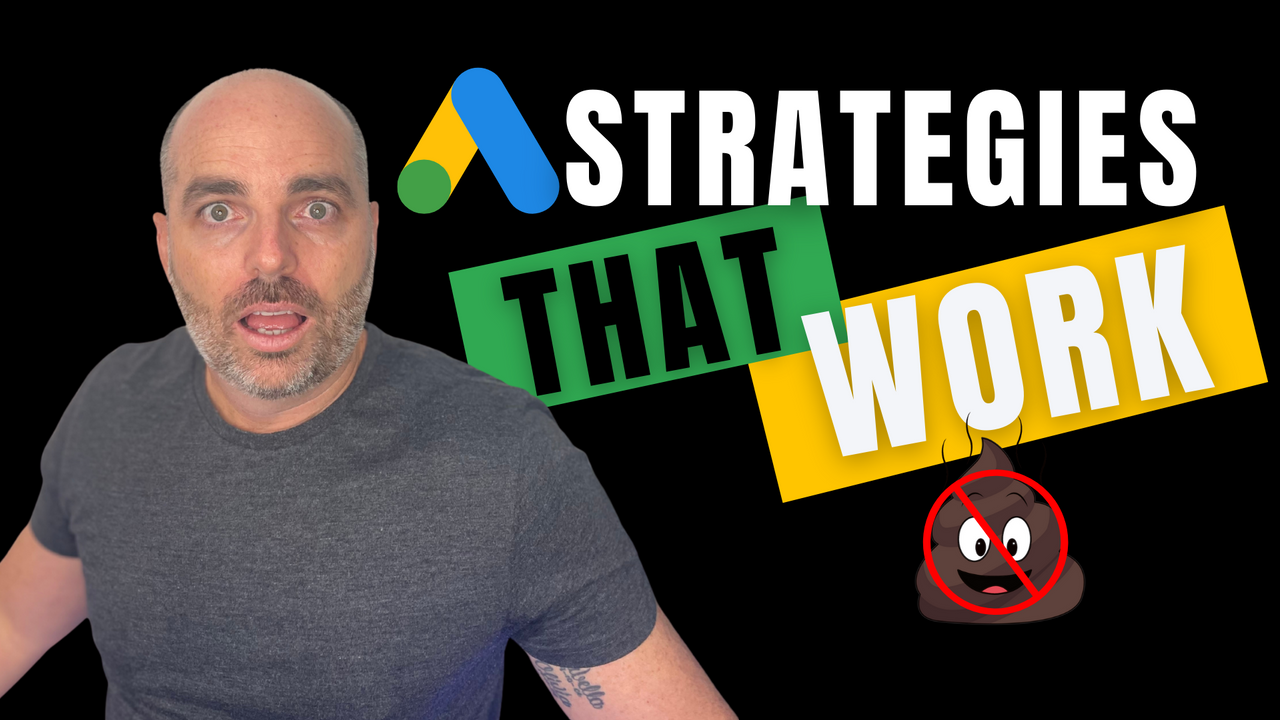
Strategies For Google Ads That Work
May 09, 2022Google Ads not working? That's because you're using the WRONG Strategies For Google Ads! Here are my Strategies For Google Ads That Work in 2022!
If you are not getting regular conversions and sales in your Google Ads campaign, the problem is not Google Ads.
The problem is that you are using the wrong strategy for Google Ads.
In this video I am going to share with you the 4 top strategies that working in Google Ads right now!
The 4 top strategies you need to use are:
1. Create your own audiences in Google Ads.
Creating your own audiences in Google Ads is important as it them allows you to re-market or re-target them in the future with specific messages or campaigns.
The easiest one of these to create is your very own remarketing audience - so you can re-target people who have recently visited your website with display, shopping ads or performance max ads - in the future.
But you can also easily create segmented audiences in Google Ads - so that you can target them with different messages.
For example: if you are running an eCommerce store you can create a custom audience in Google Ads that contains people who have:
- gone to your website
- added your product to their cart but no finished the sale
This means with this audience you can target them with specific ads - reminding them to complete their sale.
Or for a service or accommodation based campaign you can create an audience for people who have:
- gone to your website
- & also visited an individual service or accommodation page
With this audience you can then target them with specific ad copy reminding them to finish their booking today!
2. Always segment your campaign into individual keyword or product specific ad groups!
- If you are running a search campaign: your ad groups should be broken down so that they are all only targeting 1 individual keyword theme per ad group.
- If you are running a shopping or performance max campaign: your campaigns need to have individual product groups or asset groups were you are targeting individual product categories
The reason for this very simple: is because if you see that certain a keyword theme or product group is not being successful you can simply:
- Pause that ad group or product group that is not generating any conversions so you don’t waste any more budget on unsuccessful keyword themes or products.
- This then also allows for more of you budget to be spent on the best performing keyword themes or products in your campaign
3. Use the correct Budget structure.
This is one that most people do not even think about - but it can make a really REALLY Big difference!
It is very likely that you will have keywords that will have a large volume - so keywords that have a large number of searches.
And this it is also likely that you will have other groups of keywords that - are longer tail keywords or very specific keywords - that don’t have as many searches but will have a higher level of conversion.
The problem is that you need to target both sets of these keywords, because:
- the longer tail or very specific keywords don’t have enough search terms in order to generate the number of conversions or sales your business needs.
- But if you don’t set your budget structure correctly the high volume keyword will use of your daily budget, leaving no budget left for those lower volume but high converting keywords
So what you need to do is to seperate your keyword themes or product groups into different campaigns - because the campaign level is where you set your daily budget budgets.
And if you don’t use the correct budget structure you will end up wasting all of your budget of the high volume keywords having nothing left for those high converting keywords that may not be searched all of the time
This allows you to then allocate the correct budgets to different keyword themes or product groups.
4. Split Test your Responsive Search Ads.
Your Google Ads campaign should be running split tests every single month - even with Responsive Search Ads.
With the upcoming change in June of this year with Google only allowing you to create & edit responsive search ads, some people think that you either cannot continue to do split tests or this is not required.
This is wrong - as spilt testing your Responsive Search Ads is easy done and needs to be completed every single month.
